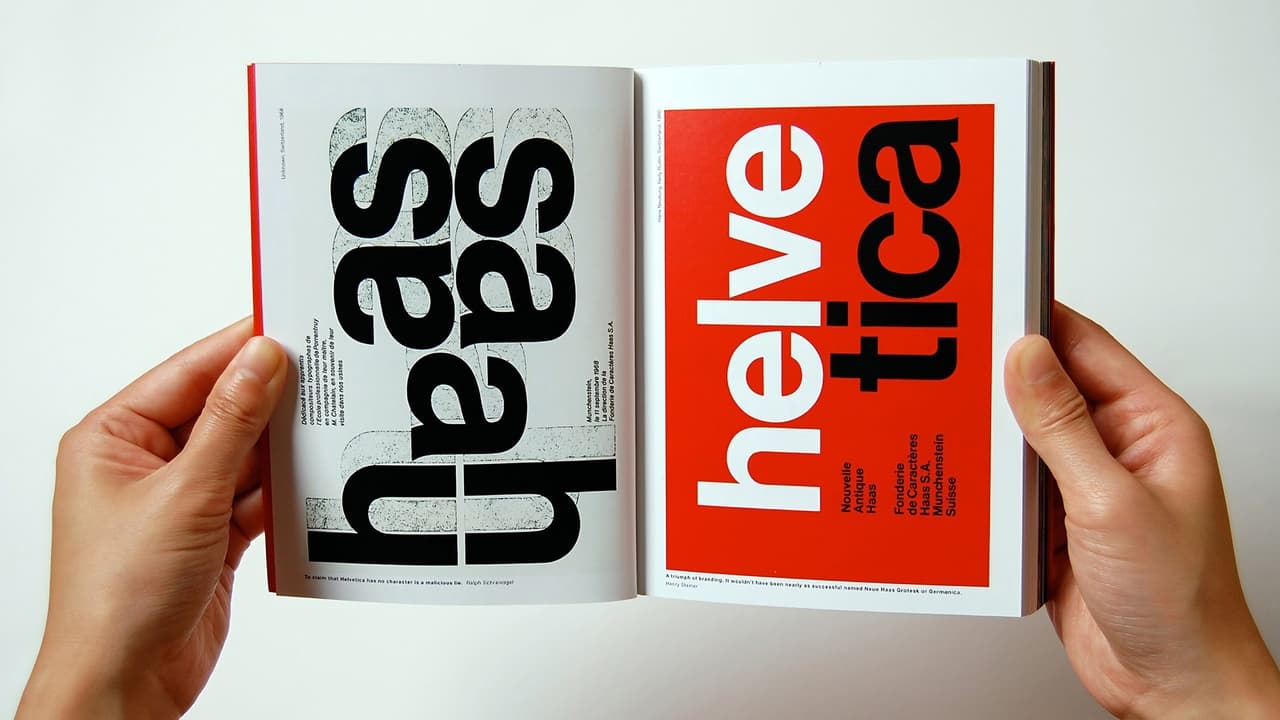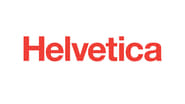Austin proux
You know that font you see everywhere that makes everything look pretty nice? It's Helvetica. It looks nice because it's very simple and formal. That's all you really nice to know, but if you'd like more information, I would suggest wikipedia. Watching this film past the 15 minute mark is a Beckett-esque act in absurdist torture.If you would like to watch the most uninteresting, boring, plain-spoken, dry people in the world talk about a single font for the totality of a feature length film, I'm not going to stop you, but I would certainly hope that child protection laws prevent any minors from being forced to experience this against their will. The most jarring thing about the film isn't any single aspect represented, but the fact that someone payed significant amounts of money to produce a feature length film about a font known specifically for its plainness and formality. It's a product purely made to be inoffensive in every aspect.One of my favorite reviewers has a common rating system regarding documentaries where you ask "if this was all fictional, would I still find this entertaining?" Well, judging by the fact that I genuinely believe that showing this to an unwilling minor should be considered child abuse, I didn't have a lot of fun watching this. I don't find the idea of a common, plain, nice font developed by very plain and common people very entertaining.
lastliberal
There was a time when I was editor, publisher, and writer of a small newspaper in Spain. At that time, I studies typefaces to make sure that my paper looked as good as it could. In light of that I was interested in this documentary about the most popular typeface designed.Helvetica has been around 50 years, and is the "default" type according to Erik Spiekermann, who really gives an exciting discussion of the type.Many others chime in on the pros and cons of Helvetica. It is a fascinating journey into design. Exploring where we have been and where we are going in even the simple areas of life helps us understand who we are.
tedg
This is surely the best documentary I have seen. I use several metrics in this.A film is almost without exception a story. A documentary is usually presumed to be a found story, an existing one that the filmmaker merely exposes. We come to the thing expecting some coherent story, already formed, the problem having two threads: Can we trust the filmmaker? Does the story resonate? Often a solid position in one mitigates the other.But real life at least the life I know has no stories that are blunt. Real stories, the ones that weave themselves through the world, are rich, only somewhat visible, immensely intriguing and often educational. I expect to be puzzled. If there are "two sides," I immediately mistrust the teller, because true movement is simply itself.This film should be celebrated simply because it decides to present a story in its unformed state. We hear from designers young and old, clever and not. Some are geniuses and some see the genius of design and we have no idea which is which. They report profoundly different views on a typeface. Lest we think this is an irrelevant subject, the observations on the typeface are bridged by examples to show how thoroughly it has saturated. So we are left with the same form as "Ten Tiny Love Stories," perspectives that surround the notion and instead of pulling out the answer, illuminated the mystery. The simple fact is that this is a powerful, mysterious force that makes us do things. The comparison of font design and romance is not misplaced: both somehow relate to the bricks of stories we use in constructing a life or for some of us a fort to protect from life.So I can recommend this to you. I recommend seeing it with your partner, your real partner. And then sit with them quietly and reflect on the nature of clarity and knowing.I can criticize this though. There is much that could easily have been said that wasn't.Its usually presumed that spoken language is quite old and written language a relatively modern technology compromised to make it persist. In this context, type design is merely a matter of style, a choice.But there is evidence that spoken language predates modern humans and evolved over time through collaborative toolmaking, most particularly weaving and stonechipping. Acts of hands. Shapes -- physical form, with symmetries. Spoken language in this history is itself an adaptation, and written language perhaps closer to the core of how we think. In this history, shapes matter. The process of creating form in story all manner of form matters. The story is how the story is shaped.We bump against this intuitively. It was why the Macintosh was a giant step forward in the 80's, because storytellers could for the first time be storyshapers (publishers, in the corporate lexicon). And why Microsoft is such an evil. And why type design elements have become so deeply viral. The original features come from carved inscriptions and independently from monks' pens.Anyway, from that Mac beginning came a focus on type as never before. And several design journals that struggled with the issues spoken about in this film. Pulling them out of print to put on screen should carry some more weight than we have here. I am hoping that some truly talented filmmaker is inspired by this.The most edgy but still intelligent design and font design journal from the last decades is "Emigre," which you should peruse if this movie intrigues you. Also you might want to check out Darius, who was behind the first designed font.My typeface is Vendetta.Ted's Evaluation -- 3 of 3: Worth watching.
RResende
As a future architect, i felt close to many of what's depicted here. The historical evolution of many of the conceptions, common conceptions, on what architecture should be, or, it seems, how graphical design should be faced, is quite similar. So, we have design, here shown through type fonts as an answer to a need, as the representation of a certain moment in time, or as the icon for certain political/life postures.The title font is a creation of modernism, which means it works, it aims at being universal, and it's durable, visually speaking. Which doesn't mean it can't be the target of criticism. The thing for me is, the human nature doesn't allow human beings to rest the same. That's because the human mind is creative. At the same time, men like formulas. Men like to be told what's right, they like to rely. And in fact, except for a very reduced number of artists who have/had the genius to produce work generated in some outer reality, something Plato would talk about, the vast majority of mortals need references, need formulas (even if they fight them), need restrictions, as someone said in the documentary. So, to Helvetica i could add many formula items, the modernist 'boxes' of Bauhaus, the transparent spaces of Mies, these were all creations springing from creative minds, and fully adopted massively, either with fantastic results, or gradually loosing interest, context, and quality. In the end, i think everybody is, to a certain degree, conservative and radical, conformist and revolutionary, Helvetica or Script, Gropius or Gaudi. It is in the oscillation between these extremes that human creativity works, and in the conflicts which exist within that evolution. So who are you? What chances are you willing to take? how new are you willing to be. If you were(are) American, who would you vote? Obama or Clinton? The idea behind what's depicted in this film, is that the choices you make define who you are. But there's a catch. We're talking about the choices you make over the creations of others. People claim Helvetica to be part of themselves as it is part of American Airlines. And a window is opened in the end of this.The fact that today, the technological democracy allows you to have much larger power of communication and personalization of your "identity cards". I personally don't think that technology stimulates creativity, it increases your options, yes, but that just gives you a larger catalogs of "fonts". Your power to innovate is the same, with or without computers. And i even think the fantastic timings you get while working with computers may kill your creative process, because you may rush yourself into things you'll feel are not the right options, only when it's to late to change them. But it's fantastic that people are allowed to produce a feature film out of a cell phone, or get to know all things done in a certain area with very little money. It'll take a few years for us to understand what important work can be created with all the possibilities we have today. I'm skeptical, but i also tender the possibilities, and think about what i can do with them. And it really is exciting to be alive and able to participate in the process. Writing in Helvetica or by hand...My opinion: 4/5 watch this.http://www.7eyes.wordpress.com


 AD
AD


